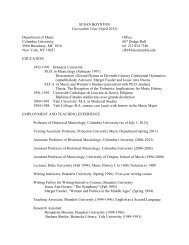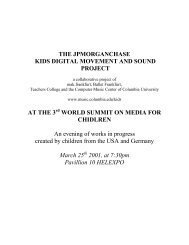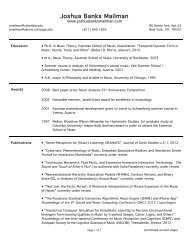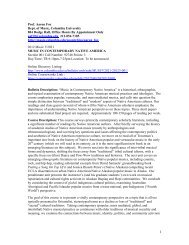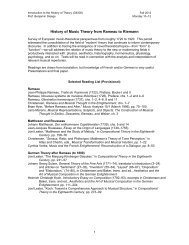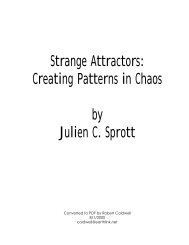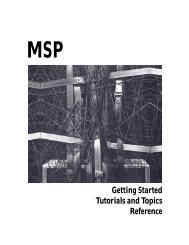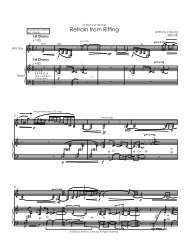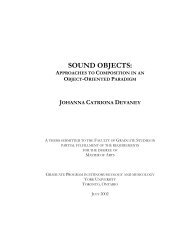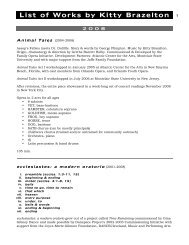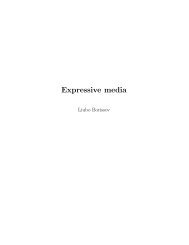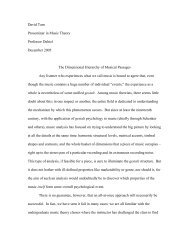Text, including the two scores - Columbia University Department of ...
Text, including the two scores - Columbia University Department of ...
Text, including the two scores - Columbia University Department of ...
Create successful ePaper yourself
Turn your PDF publications into a flip-book with our unique Google optimized e-Paper software.
<strong>of</strong> an outmoded technology, but to those familiar with <strong>the</strong> technology itself, it is also a reminder specific and idiosyncratic constraints <strong>of</strong> that technology (and <strong>of</strong> <strong>the</strong> skill necessary to make music within those constraints). Is a new version <strong>of</strong> an electronic piece, realized on faster and indication<br />
complex machines, ei<strong>the</strong>r less enjoyable or appreciable than <strong>the</strong> original made on a more constrained (and perhaps by now archaic) technology? I tend to conclude that while <strong>the</strong> newer version may or may not be more aurally pleasing, it is usually less conceptually appreciable. A pop example: Kraftwerk more<br />
<strong>the</strong>ir late 70’s hits (on analog synths) and remade <strong>the</strong>m on mid-90’s digital technology. I prefer <strong>the</strong> originals. Not only for appreciating <strong>the</strong> superior took<br />
needed to realize <strong>the</strong>m, but also for <strong>the</strong> appreciation that <strong>the</strong>y originally built <strong>the</strong>ir own equipment from scratch, ra<strong>the</strong>r than using commercial hardware or computers. The newer versions are fun to listen to, but feel like <strong>the</strong> aural equivalent <strong>of</strong> a splashy Hollywood remake <strong>of</strong> a cherished original, skill<br />
in which <strong>the</strong> emphasis on flash comes at <strong>the</strong> expense <strong>of</strong> thoughtful storytelling. Similarly, so many canonical experimental electronic works, which originally had a specific physicality combined with some technical challenge or limitation, are now easily virtually realized in a Max patch one<br />
that come to mind include Reich’s tape phasing pieces, Lucier’s ‘I am Sitting in a Room’, or Young’s ‘Dream House’). But who would be (examples<br />
in listening to that? The speed <strong>of</strong> technical innovation has left a history <strong>of</strong> pieces that are largely definable as a demonstration and/or artistic appropriation <strong>of</strong> a new technology. I wonder whe<strong>the</strong>r or not, and at what point in time, an<br />
interested<br />
66



